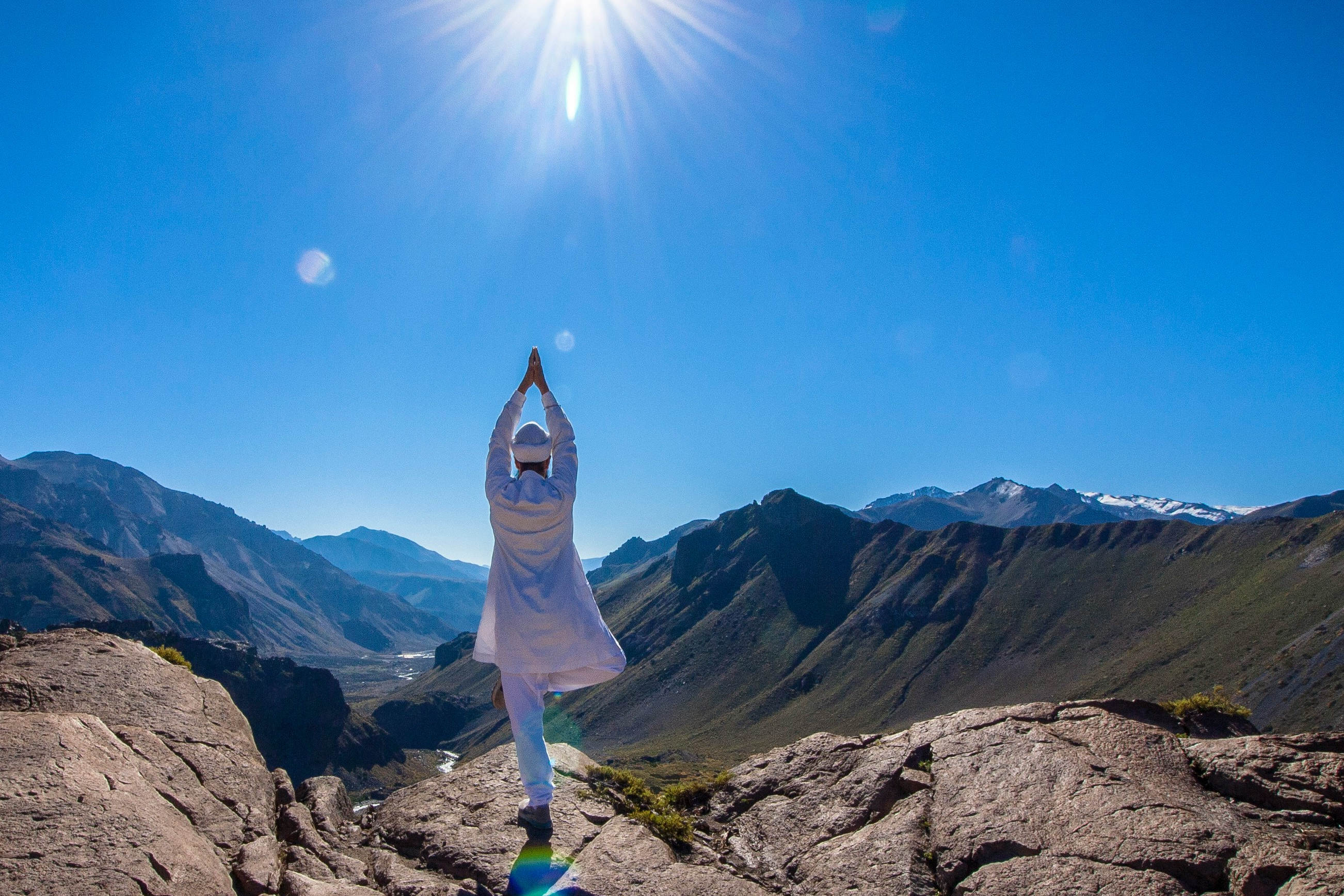
Kundalini Yoga ist eine kraftvolle spirituelle Praxis, die darauf abzielt, schlummernde Energien im Körper zu wecken und so zu Erleuchtung und gesteigertem Bewusstsein zu führen. Trotz der potenziellen Vorteile warnen viele Praktizierende und Experten jedoch vor den damit verbundenen Gefahren. Von psychischem Stress über körperliche Beschwerden bis hin zu spirituellem Ungleichgewicht kann Kundalini Yoga für Unvorbereitete riskant sein. Dieser Artikel untersucht, warum Kundalini Yoga als gefährlich gilt und wie man vorsichtig damit umgehen kann.
Panaprium ist unabhängig und wird vom Leser unterstützt. Wenn Sie über unseren Link etwas kaufen, erhalten wir möglicherweise eine Provision. Wenn Sie können, unterstützen Sie uns bitte monatlich. Die Einrichtung dauert weniger als eine Minute und Sie werden jeden Monat einen großen Beitrag leisten. Danke schön!
1. Kundalini-Energie verstehen
Kundalini wird oft als eine zusammengerollte Schlange beschrieben, die am unteren Ende der Wirbelsäule schlummert. Durch intensive Meditation, Atemübungen (Pranayama), Gesänge und Körperhaltungen (Asanas) versuchen Praktizierende, diese Energie zu wecken und sie durch die Chakren zum Kronenchakra (Sahasrara) aufsteigen zu lassen. Dieser Prozess kann zwar spirituelles Erwachen und tiefe Selbsterkenntnis bringen, ist aber nicht ohne Risiken.
2. Psychologische Gefahren des Kundalini Yoga
Eine der größten Sorgen beim Kundalini Yoga sind seine Auswirkungen auf die psychische Gesundheit. Zu den psychischen Gefahren gehören:
A. Kundalini-Syndrom
Dieser Begriff beschreibt eine Reihe von Symptomen, die auftreten, wenn die Kundalini-Energie zu schnell oder unerwartet ansteigt. Zu den Symptomen können gehören:
-
Starke Stimmungsschwankungen
-
Angst- und Panikattacken
-
Halluzinationen oder Wahnvorstellungen
-
Depressionen und Selbstmordgedanken
-
Gefühle der Losgelöstheit von der Realität (Derealisation)
B. Überstimulation des Nervensystems
Das schnelle Erwachen der Energie kann das Nervensystem überfordern und zu Schlaflosigkeit, Unruhe oder Konzentrationsschwäche führen. Manche Menschen berichten von dem Gefühl, die Kontrolle über ihren Geist zu verlieren, was zutiefst belastend sein kann.
C. Spirituelle Krise
Nicht jeder ist bereit, sich dem tiefen emotionalen und unterbewussten Material zu stellen, das während des Kundalini-Erwachens entsteht. Manche Menschen erleben eine existenzielle Krise und hinterfragen ihre Identität, ihre Überzeugungen und ihren Lebenssinn, was zu Verwirrung und Verzweiflung führen kann.
3. Körperliche Risiken des Kundalini Yoga
Kundalini Yoga beinhaltet intensive Atemtechniken, repetitive Bewegungen und lange Meditation, die alle körperliche Folgen haben können. Zu den körperlichen Gefahren gehören:
A. Hyperventilation und Schwindel
Viele Kundalini-Atemtechniken, wie beispielsweise der Feueratem, erfordern schnelles, kräftiges Atmen. Bei falscher oder übermäßiger Anwendung können sie Schwindel, Benommenheit oder sogar Ohnmacht verursachen.
B. Erhöhte Herzfrequenz und Blutdruckprobleme
Intensive Atemübungen und Energieverschiebungen können das Herz-Kreislauf-System belasten. Bei Personen mit Herzerkrankungen oder Bluthochdruck können Nebenwirkungen wie Herzklopfen und Brustschmerzen auftreten.
C. Muskelzerrungen und -verletzungen
Einige Kundalini-Stellungen erfordern erhebliche Flexibilität und Ausdauer. Ohne entsprechende Anleitung können sich Praktizierende Verletzungen an Wirbelsäule, Nacken oder Gelenken zuziehen, was zu chronischen Schmerzen oder Muskelzerrungen führen kann.
4. Spirituelle und energetische Risiken
A. Vorzeitiges Erwachen der Kundalini
Das Erwachen der Kundalini-Energie zu früh oder ohne entsprechende Vorbereitung kann zu Energieungleichgewichten führen. Manche Menschen erleben unwillkürliche Körperbewegungen (Kriyas), innere Hitze oder Druck im Kopf, den sie nicht kontrollieren können.
B. Negative energetische Erfahrungen
Anstatt Erleuchtung zu erfahren, berichten manche Menschen von Dunkelheit, Angst oder verstörenden Visionen während der Kundalini-Praxis. Dies kann überwältigend sein und zu Paranoia oder spiritueller Belastung führen.
C. Verlust der Erdung
Das Erwachen der Kundalini kann bei manchen Menschen zu einem Gefühl der Trennung von ihrem physischen Körper und der materiellen Welt führen. Dies kann zu Schwierigkeiten bei der Erledigung alltäglicher Aufgaben, der Pflege von Beziehungen oder dem Funktionieren in der Gesellschaft führen.
5. Die Rolle der richtigen Anleitung
Einer der Hauptgründe für die Gefährlichkeit von Kundalini-Yoga ist der Mangel an angemessener Anleitung. Im Gegensatz zu traditionellen spirituellen Systemen, in denen ein Guru oder Mentor den Schüler eng begleitet, versuchen viele moderne Praktizierende Kundalini-Yoga ohne Anleitung. Dies erhöht das Risiko negativer Erfahrungen.
Um sicher zu üben, sollte man:
-
Lernen Sie von einem erfahrenen und zertifizierten Lehrer
-
Gehen Sie schrittweise und strukturiert vor
-
Hören Sie auf Ihren Körper und vermeiden Sie es, über Ihre Grenzen hinauszugehen
-
Nehmen Sie an erdenden Aktivitäten teil, z. B. Zeit in der Natur verbringen oder achtsame Bewegung üben
6. Wer sollte Kundalini-Yoga meiden?
Bestimmte Personen sollten besonders vorsichtig sein oder Kundalini Yoga ganz vermeiden, darunter:
-
Personen mit einer Vorgeschichte psychischer Erkrankungen, einschließlich Schizophrenie oder bipolarer Störung
-
Personen mit Herzerkrankungen oder Bluthochdruck
-
Personen, die unter extremem Stress oder emotionaler Instabilität leiden
-
Menschen, die neu im Yoga sind und noch keine solide Grundlage in den grundlegenden Übungen haben
7. Wie man Kundalini Yoga sicher praktiziert
Wenn man weiterhin daran interessiert ist, Kundalini Yoga zu praktizieren, ist es wichtig, Vorsichtsmaßnahmen zu treffen:
-
Beginnen Sie mit sanften Yoga-Übungen, bevor Sie sich mit Kundalini-Techniken beschäftigen.
-
Arbeiten Sie mit einem qualifizierten Lehrer zusammen, der sowohl die Risiken als auch die Vorteile versteht.
-
Vermeiden Sie extreme Atemübungen oder Meditationen, die Stress verursachen.
-
Bleiben Sie geerdet, indem Sie langsame, beruhigende Aktivitäten wie Spazierengehen oder Tagebuchschreiben einbauen.
-
Wenn Sie negative Auswirkungen bemerken, beenden Sie die Praxis und suchen Sie professionelle oder spirituelle Beratung.
Abschluss
Kundalini-Yoga kann eine transformierende Praxis sein, birgt aber auch Risiken. Die körperlichen, psychischen und spirituellen Gefahren, die mit einem vorzeitigen oder falschen Erwachen der Kundalini verbunden sind, erfordern Vorsicht. Die richtige Vorbereitung, Anleitung und Selbsterkenntnis können helfen, diese Risiken zu minimieren und eine sicherere und ausgeglichenere spirituelle Reise zu gewährleisten.
War dieser Artikel hilfreich für Sie? Bitte teilen Sie uns in den Kommentaren unten mit, was Ihnen gefallen oder nicht gefallen hat.
About the Author: Alex Assoune
Wogegen Wir Kämpfen
Weltweit-Konzerne produzieren in den ärmsten Ländern im Übermaß billige Produkte.
Fabriken mit Sweatshop-ähnlichen Bedingungen, die die Arbeiter unterbezahlt.
Medienkonglomerate, die unethische, nicht nachhaltige Produkte bewerben.
Schlechte Akteure fördern durch unbewusstes Verhalten den übermäßigen Konsum.
- - - -
Zum Glück haben wir unsere Unterstützer, darunter auch Sie.
Panaprium wird von Lesern wie Ihnen finanziert, die sich unserer Mission anschließen möchten, die Welt völlig umweltfreundlich zu gestalten.
Wenn Sie können, unterstützen Sie uns bitte monatlich. Die Einrichtung dauert weniger als eine Minute und Sie werden jeden Monat einen großen Beitrag leisten. Danke schön.































0 Kommentare